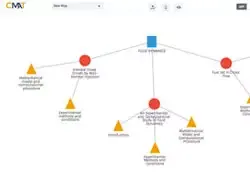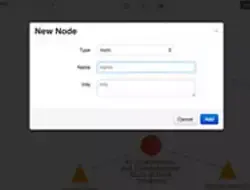Concept Map Authoring Tool
Massachusetts Institute of Technology
The Concept Map Authoring Tool is a web-based tool that Massachusetts Institute of Technology (MIT) instructors use to author and visualize concept maps for their courses. Different color and shaped nodes represent topics, course outcomes, learning activities, and media elements. By clicking and dragging, users can create and connect nodes and arrange them on the screen. In addition, maps can be loaded from a MIT backend service or created by pasting outlines.
Problem
MIT developed a Core Concept Catalog (MC3) software service to help the MIT community manage and share information about curricular topics, learning goals, and related content concerning disciplines and subjects of the Institute. Because MC3 is a software service without a user interface, MIT approached Atomic Jolt to create a Concept Map Authoring Tool (CMAT) that would facilitate authoring and help instructors better understand the relationship between elements of the catalog.
Solution
Atomic Jolt worked closely with MIT MC3 creators to understand the
existing systems that needed to be integrated and the context of use
for CMAT. We researched existing open source solutions and while we
found many good ideas that we incorporated, we didn't find anything
that we could build from directly. We designed and iterated user
interfaces and experiences to refine designs. We implemented CMAT
using leading Javascript frameworks, including D3.js and backend
systems needed to integrate with MIT's MC3 application programing
interfaces (APIs). Through user feedback we saw the possibility for
improving the authoring experience by pasting outlines and
consequently added the necessary support.
BOTTOM LINE: MIT instructors now have a
simple-to-use interface as requested. The next steps are to
integrate CMAT into MIT's campuswide single sign-on service and work
towards wider adoption.




